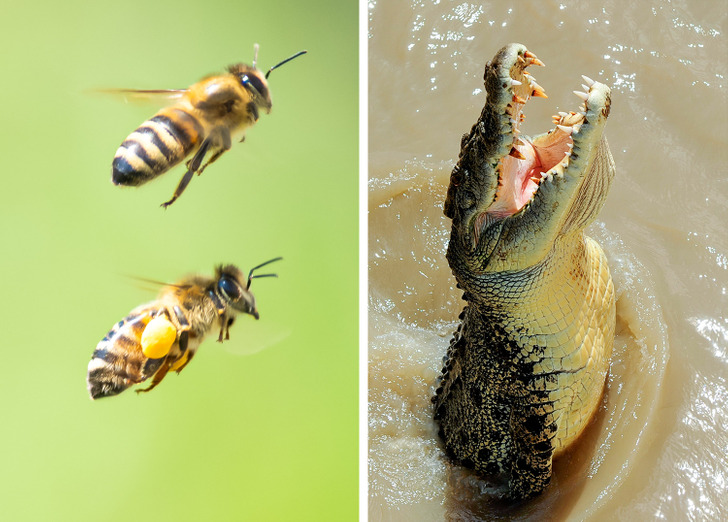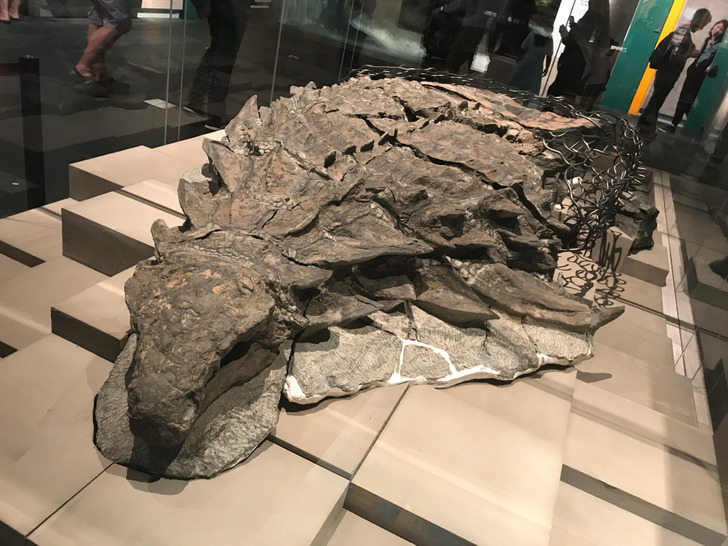How Dinosaurs Were Different From the Way They Are Depicted in Movies

At one point in time, dinosaurs ruled the world, having occupied mostly all ecological niches for many hundreds of millions of years. Some were prehistoric raptors who moved around on the ground, others were amphibians, and some learned to fly. We have not had a chance to live side by side with them, so our ideas about these animals are oftentimes based on images from movies, which are far from reality.
5-Minute Crafts wants to bust some myths about dinosaurs and look at life in the prehistoric world from a scientific point of view.
Myth # 8: Only dinosaurs lived on Earth hundreds of millions of years ago.
The truth: We say that today our world belongs to mammals though there are insects, fungi, reptiles, arachnids, birds, fish, mollusks, and other organisms living in it. The situation during the time when dinosaurs lived was somewhat similar.
During the Mesozoic era, insects, which appeared on Earth long before the first dinosaur, would constantly buzz around in the air. In addition to insects, the planet was inhabited by mammals, fish, turtles, snakes, amphibians, and birds. Oceans were inhabited by huge predators, including ichthyosaurs, plesiosaurs, and mosasaurs while walking along the banks of rivers and lakes could lead to an encounter with the ancestors of modern crocodiles.
Myth #7: Pterosaurs are flying dinosaurs.
The truth: Pterosaurs can’t be called dinosaurs from a scientific point of view. They are not reptiles descended from the last common ancestor of the lizard and ornithischian groups and are not directly related to modern birds, although they are more closely related to them than to crocodiles or any of the modern-day living reptiles.
Myth # 6: All feathered dinosaurs were the ancestors of birds.

The truth: It has been believed for many years that feathered dinosaurs somehow belonged to the family of birds. But in 1996, scientists in China discovered Sinosauropteryx (as pictured above), the first carnivorous dinosaur that was covered in very simple thread-like feathers but was not a direct relative of birds.
By 2011, studies appeared, that suggested all dinosaurs had some kind of plumage that was covering at least some part of their body — just like today, the bodies of mammals are covered with hair to one degree or another.
Moreover, according to recent studies, dinosaurs didn’t develop but inherited plumage from their ancestors, who appeared on Earth before them.
Myth #5: Tyrannosaurus was a giant raptor with green wrinkly skin.

The truth: Today, we know for sure that the largest dinosaur covered with feathers was Yutyrannus. It lived 125 million years ago and could reach a length of 23 feet. This discovery forced scientists to reconsider their views on the appearance of its close relative, the Tyrannosaurus rex.
In the movies, Tyrannosaurus rex is often depicted as a huge green raptor with wrinkled skin. It is now assumed that it also had plumage. We still don’t know what function this plumage had but it’s speculated that T-Rex could’ve used it for camouflage, for example.
Myth #4: We can’t know for sure what color dinosaurs really were.
The truth: Under certain circumstances, paleontologists can determine what the color of a fossil animal actually was. For example, when it comes to feathered non-avian dinosaurs or extinct birds, scientists examine melanosomes, whose shape determines the color of the pigments in feathers or skin. In the cases where experts manage to find amber, that has fabric, hair, and feathers that are perfectly preserved, are considered to be real luck. In other cases, it’s the preserved scales or skin that can reveal the color.
For example, the photo above shows well-preserved fossils from Borealopelta. There, scientists found melanosomes which showed that this dinosaur was distinguished by a reddish-brown color that served as camouflage.
By the way, judging by the latest discoveries, feathered dinosaurs could be any color. If we have pink flamingos today, there could’ve been pink feathered dinosaurs roaming the Earth back in the day.
Myth #3: Feathered dinosaurs with wings could fly.
Imagine you discovered a skeleton of Anchiornis, shown in the picture above. One might think it’s an ancient bird. The proportions of the skeleton, its small height, and the traces of feathers on the wings and tail indicate that indirectly.
In reality, it’s not true. It is believed that this dinosaur and modern birds had a common ancestor, but Anchiornis itself was not a full-fledged bird, although, it had some features of birds, like many dinosaurs. We learned about this thanks to technologies that allow us to reconstruct the appearance of a creature in order to study its possible behavior and lifestyle. Anchiornis, for example, visually resembled a mixture of a red-headed woodpecker and a tiny velociraptor.

Anchiornis had black, white, and gray feathers along its body and had a red crest on its head. Despite the presence of feathers and 4 wings (long feathers were located on all 4 limbs, and not just on the front ones, like in modern birds), this dinosaur was unlikely to be able to fly.
Myth # 2: Tyrannosaurs would roar, and velociraptors communicated with each other using special sounds.

You have likely seen predator dinosaurs, like in the pics above, in movies — they roar loudly with an open mouth and chase their prey. Modern research suggests that this was not the case.
It is assumed that many dinosaurs made sounds without opening their mouths. Crocodiles and ostriches are modern animals that “communicate” in a similar way. Therefore, it’s unlikely that the intimidating roar, by which many of us remember the T-Rex in films, was really like this. According to modern data, this giant would also make sounds without opening its mouth.
Velociraptors also looked different in real life. The sounds they made were actually more like those that cassowaries make today. The animals themselves were the size of a small dog and were not coordinated group hunters. Undoubtedly, they were the smartest dinosaurs but couldn’t communicate with each other the way that it’s shown in the movies.
Myth #1: All dinosaurs are extinct.
The truth is: It would be a mistake to think that all dinosaurs are green scaly lizards who went extinct millions of years ago. On the contrary, dinosaurs are still living among us in some sense. And they make up about 13,000 different species. There are many of them that resemble more prehistoric species rather than modern birds.
For example, look at the cassowary depicted above. This bird species appeared about 20-30 million years ago. It has bright colors and unusual feathers. It has a claw on the main finger of its wing — a primitive trait passed down from reptiles. Cassowaries cannot fly but they are perfect swimmers (don’t get surprised if you see a cassowary floating in the sea or swimming across a broad river). They can develop a speed of up to 30 mph when running through the thick of the forest, jump up to 5 feet in height, and use their powerful three-toed legs (shown in the photo on the right, above) with sharp claws as weapons. Similar creatures inhabited our planet during the time of dinosaurs.



